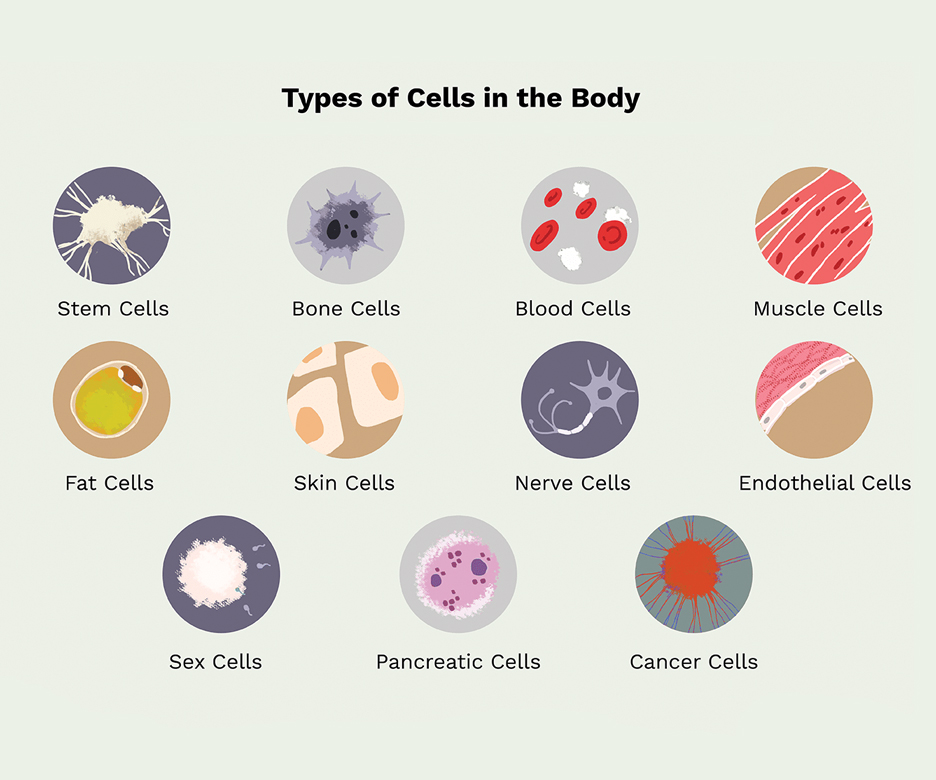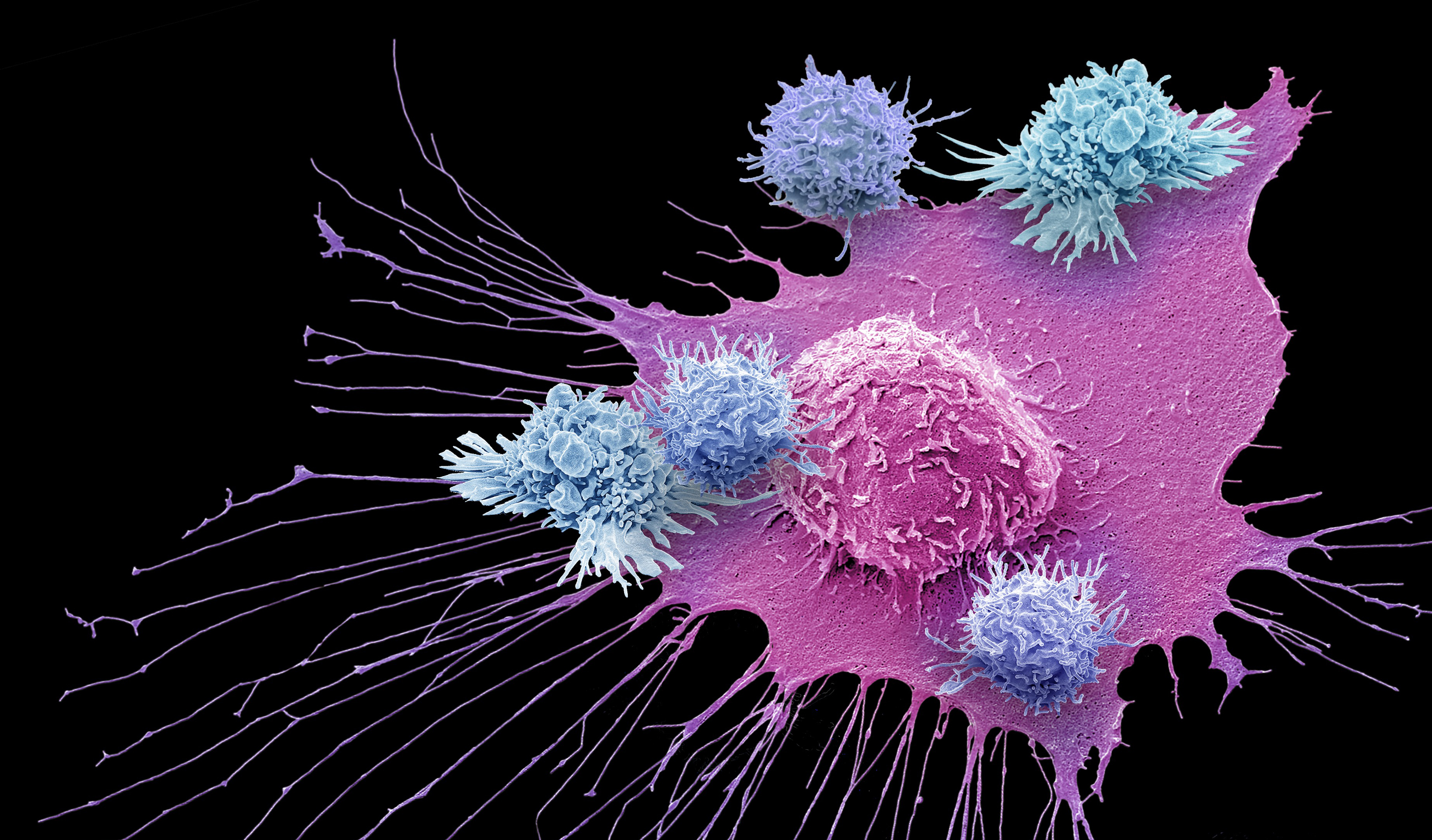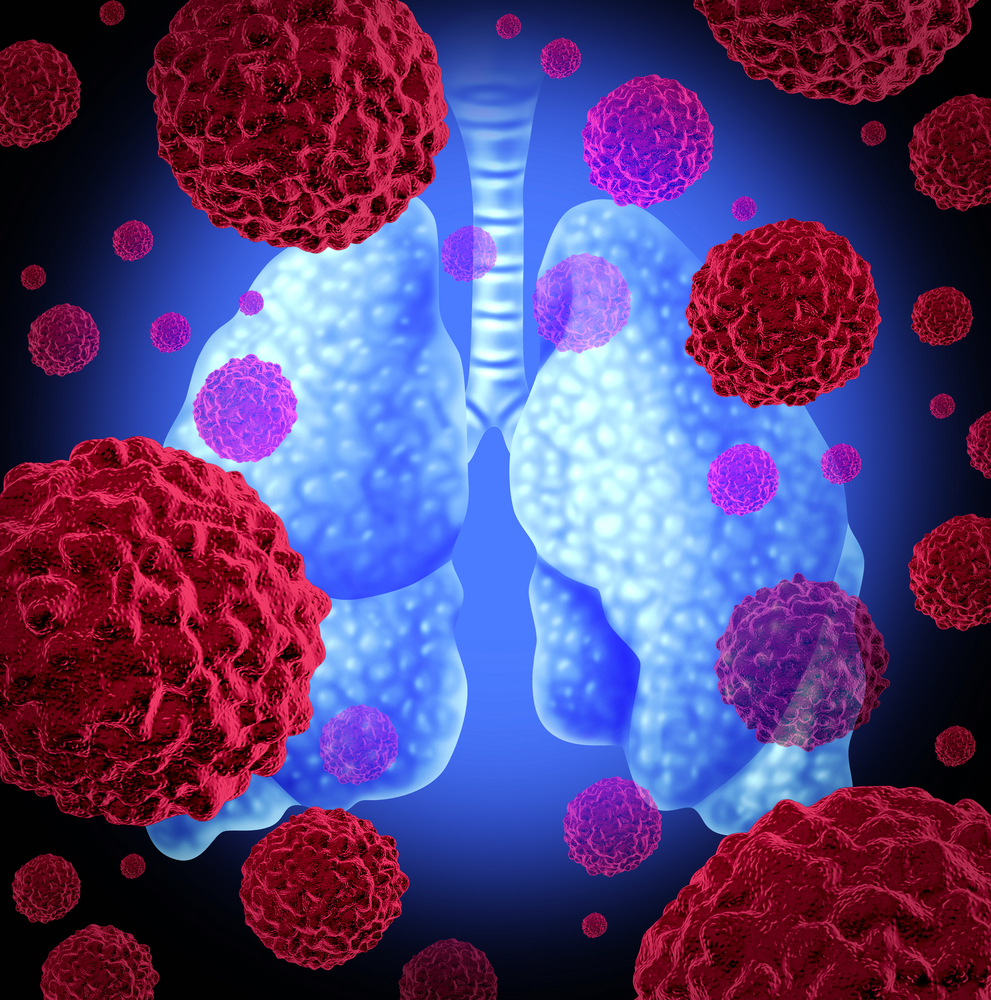Cancer Immunotherapy
Cancer, Uncontrolled Cell Proliferation

What is cancer? Cancer is a disease of human cells.
Our body is made up of countless cells. The body will automatically breed new cells, allowing us to grow, replace old cells, or repair damaged cells. This mechanism is controlled by certain genes. But if those genes that controlling this mechanism are damaged, cancer will appear. These damages of genes have opportunities to occur in our lives, and a small number of people have inherited damaged genes from their parents.
Normally, cells divide and multiply in an orderly manner. However, once it loses control, it will continue to multiply and accumulate in the body as “tumour.” Tumours can be divided into two types, benign and malignant. Malignant tumours are commonly called cancers.
Cells of benign tumors will stop at their positions and will not spread to other parts of the body. Malignant tumours contain cancer cells, and when they are initially formed, they stay on the original site and are called “in situ cancer”. However, if the cancer cells are not treated, it will destroy the surrounding tissues and spread to other organs to become invasive cancers. When the cancer spreads from its original location to other parts of the body, it is called secondary or metastatic cancer.

Immunotherapy – Lung cancer and melanoma
Cancer is not unknown to modern people. Hundreds of cancers have been discovered so far. Huge number of people died of cancer globally every year. Any human organs and parts of the body could be the targets of cancer cells.
According to written records, in ancient India as early as 2,000 BC, there were old manuscripts describing malignant tumours of different parts of the body, but at the time there was no such thing named as cancer.
Until about 400 BC, Hippocrates, who known as the “father of Western medicine,” based on his clinical observation, he found that the human body’s tumours were roughly divided into “harmless” tumours and “dangerous” tumours categories, the word cancer, slowly formed since then.
Since the 19th century, medical experts have continuously studied various cancer treatments, and they have continuously improved from generation to generation, ranging from surgery, radiotherapy, chemotherapy, targeted therapy. Even though cancers are not cured completely, these treatments can at least increase the survival rate and improve cancer patients’ quality of lives.
However, these anti-cancer methods are inevitably causing side effects. These are another major challenge and suffering which are awaiting cancer patients after their diagnosis.

About a hundred years ago, new developments in cancer treatments have been achieved. Scientists have discovered we can fight cancer cells by relying on our own immune system. As long as the immune system is activated and immune system able to distinguish cancer cells from normal cells, it will attack cancer cells for achieving anti-cancer effects. This method counts on body’s inherent power to fight cancer, rather than external cancer treatments, so its side effects are relatively few.
However, immunotherapy has only matured in recent years and is used in clinical trials not long ago. So far, only lung cancer and melanoma (a type of skin cancer) are currently approved to be treated by immunotherapy, and other cancers are still pending for further researching.
Although immunotherapy has been widely used in Europe and the United States as a cancer therapy, Asian countries are still staying at the early stage relatively. Only a handful countries such as Taiwan and Japan, can use immunotherapy to treat lung cancer and melanoma at this juncture, other countries are remaining at EAP (Expanded Access Program) stage.
EAP clinical trials mean that pharmaceutical companies can provide new treatment that are still on research stage and allow severely sick patients to participate in clinical trials under specific circumstances.

Drugs of activating immune system T cell
Although there are many cancer treatments available for patients, immunotherapy is identified as one of the alternatives currently.
In fact, immunotherapy is not a new idea. It has been proposed by scientists as early as 100 years ago, but it is used in cancer treatment since 2010. It was first tested for treating prostate cancer. On year 2012, the clinical trials of immunotherapy were officially conducted.
Although cancer patients receive other cancer therapies, most patients still have a certain degree of abilities within their immune system. When immune system T cells are activated by drugs, the spread of cancer cells can be controlled.
Immunotherapy has already undergone the first phase of clinical trials in 2011. Over the past four years, 1,100 cancer patients have been involved, mainly melanoma and lung cancer. The response is encouraging.
Immunotherapy activates immune system
Reduce side effects
Immunotherapy is the focus of current cancer research. It injects living bacteria into cancer patients and activates the patient’s immune system to exert its function of attacking cancer cells.
Immunotherapy works well for cancers caused by genetic mutations. It activates the immune system in the patient’s body to allow the immune system to distinguish between cancer cells and good cells. Then it is ordered to attack cancer cells without resorting to external forces. The side-effects of standard cancer treatment are greatly reduced, and at the same time it can also reduce the chance of cancer recurrence.
Although immunotherapy is currently only used to treat lung cancer and melanoma, other cancers are already under researching stage.
The principle of immunotherapy is the use of T cells in lymphocytes to function as a “killer.” T cells play an important role in the immune response, it can play a multi- function role, two of which are the elimination of infected cells, like the “killer”, can kill the targeted cells that produce a specific antigen response. At the same time, it can also spread through proliferation and activate other immune cell types that can produce a direct immune response.
Immunotherapy activates the patient’s immune system and allow the immune system to differentiate normal cells and cancer cells, then attack cancer cells for treating patients.

Melanoma
The number of cases of melanoma has continued to increase in the past 40 years. In 2012, there were an estimated 23,130 new cases worldwide. By 2014, there were 76,100 new cases in the United States alone. Although melanoma is less than 2% of the 6 skin cancers, it is the most serious skin cancer, and it is the main deadly skin cancer in the United States.
Before the age of 45, women were more likely than men to have melanoma, but after age 60, men were twice as likely as women, and by the age of 80, women were three times more likely than men, although the average age of melanoma is 61 years.
- Ultraviolet (UV) damage is the main risk factor. Apart from the sun exposure, other UV injuries include tanning lights or beds, and the risk of skin cancer is even greater.
- If a person has many irregular or large areas of moles, it increases the risk of melanoma.
- Other risks include fair skin, freckles and light hair, personal or family history, immunosuppression, and a rare genetic disease, “Xeroderma pigmentosum”.

Typical symptoms of melanoma:
- New unusual pigments appear on the skin and will continue to spread.
- The body’s moles have changes.
- Melanoma often occurs in areas that can expose to the sun, such as the back, feet, arms and face. But there are also sites where the feet and palms are not often exposed to sunlight.

6 kinds of skin cancer; the most serious is melanoma
Currently Taiwan only allows immunotherapy for lung cancer and melanoma.
Melanoma is the most serious among the six types of skin cancers, and it is a rare disease. Probably Australia is the country with the highest number of melanoma patients.
Humans in the world is divided into six skin types. From white to black, the ultraviolet tolerance of each race has a different level, ranging from least capacity to highest capacity of sunburned categories. Blacks are not easily sunburned, while whites are the most easily sunburned people. Type 1 and Type 2 are listed as the first and second level least capacity of sunburn, while the Chinese who belong to the yellow species categorised into Type 4 in terms of capacity to sunburn.
Although melanoma patients are predominantly white people, there are no shortage of yellow species. For example, there are many cases in Taiwan. However, it is still being considered as rare disease. Hence, people generally don’t know much about this type of cancer, so the degree of concern is not as high as that of other cancers.
Due to the lack of understanding of the symptoms and the absence of obvious signs, the appearance of the disease is no different from the marks or spots appearing in common skin diseases. Therefore, many people are not paying enough attentions, but after that it becomes too late to seek medical treatments.
There are no other signs of melanoma, so it is a warning when the skin has a long-lasting mark. In addition, the average age of melanoma patients is 60 years old.
Melanoma is not confined to any organ. It can grow on any part of the body covered by skins, but most of it appears on the palm of hand, on the soles of feet, and on fingers, making it easy for people to take it lightly.
Over 100 new cases per year in Malaysia
According to records, melanoma is currently predominantly found in Australia and New Zealand, with relatively few Asian countries and only about 8 out of 100,000 people. However, it is worrying that Asian cases have continued to increase, and the mortality rate is very high. Take Taiwan as an example, there are 250 new cases each year and the death toll is 120 people.
In China, there are 9,000 new cases and 4,500 deaths each year. There are 649 new cases in Korea and 263 deaths each year. Then there are 128 new cases each year in Malaysia. The death toll is 51, and Singapore is relatively small. There are 40 new cases each year and the death tolls are 17 people.
The five-year survival rate of melanoma is less than 50% and even less than 10% in the United States. Despite this, if it is discovered and treated early, the chance of cure is high.
Although melanoma is one of the skin cancers, the source of this cancer is not just ultraviolet light. According to research, 58% of cases are related to ultraviolet light besides exposure of chemicals. For example, in Taiwan, a lot of melanoma patients were farmers.Perhaps this is related to their long-term exposure to pesticides, but it cannot be denied that overexposure to sunlight is also one of the reasons.
In addition to chemical substances, genes of Asians are also a key risk factor of melanoma. In contrast, 90% of patients in Europe and the United States are related to excessive sunlight exposure.
Based on the cases in Taiwan, patients suffering from melanoma due to genetic mutations, in fact many of them were caused by puncture wounds. For example, when a fisherman accidentally injured by a fish hook or car door, normal people can heal such injuries easily. If a patient undergoes a gene mutation during healing process, it will develop melanoma.
At present, the only treatment for melanoma is the surgical removal of tumours, with the assistance of radiotherapy and chemotherapy. The choices are very limited in the past. Now immunotherapy has been proven to be effective for treating melanoma, which is a breakthrough in the history of cancer.
The success of immunotherapy, in addition to the treatment of tumours, can also extend the chances of a 5-year survival rate for patients. At present, there are 4,846 cases undergoing immunotherapy clinical trials. More than half of patients survived for 5 years, and some even reached 10 In years, this encouraging result has never happened before.
Studies also show that if immunotherapy plus chemotherapy is used, the rate of recovery will increase from the current 4% to 25%, which will greatly reduce the mortality rate, and even one out of every 5 patients will survive.
At present, the U.S. Food and Drug Administration has approved the use of immunotherapy for lung cancer and melanoma patients, mainly for stage-4 of melanoma, but in Europe, some doctors have started immunotherapy on stage-3. While in Taiwan, immunotherapy was approved on Year 2013 only.
Number of smokers and lung cancer cases increasing
Lung cancer is one of the top ten cancers in the world. There are as many as 1.8 million new cases each year and 1.6 million deaths.
Thanks to the better awareness in western countries, the number of smokers has decreased, which resulted the number of lung cancer cases decreased in tandem significantly. On the other hand, lung cancer has become a threat to developing countries, especially in Asia, for examples, South Korea, Taiwan, Malaysia and Singapore whereby lung cancer is ranked as top-10 cancers, partly due to relative low awareness on this disease. The number of smokers continues to rise in these countries, resulting in an increase of number of lung cancer cases.
According to last year’s statistics, there are 4,403 new cases and 4,134 deaths in Malaysia each year; there are 22,873 new cases in South Korea and 17,848 deaths; there are 11,000 new cases in Taiwan and 4,000 deaths. In Singapore, there were 1974 new cases and 1590 deaths.
From the above data, the mortality rate of lung cancer is quite high. This is because more than half of the patients have spread cancer cells at the time of diagnosis, and the 5-year survival rate is only 5%.
But 15 to 30% of lung cancer patients are not smokers. They are suffering from lung cancer because of genetic mutations. This happens very often in Asians, especially young people and women. The reason remains unknown.
In Australia, the average age of lung cancer is 72 years old, and if it is a genetic mutation, the average age of patients is 50 to 55 years old.

Effects of immunotherapy varies from one person to another
Immunotherapy can be used to treat those lung cancers caused by genetic mutations, and this therapy can repair the mutated genes through drugs; however, keep in mind, tumours are cells that can change, thus these cells can immune to immunotherapy, and then transforming into second-generation tumours later.
Immunotherapy is also regarded as targeted therapy. Although it is said to be effective in the treatment of lung cancer, the use of drugs varies from person to another, and the response of the immune system also varies from patient to patient. Currently, 20% to 50% of patients demonstrated positive results. Immunotherapy has been proven to be effective for longer period, with only 1-2% of patients showing side effects after receiving such treatment. From the above results, it can be shown that immunotherapy is more effective than chemotherapy in treating tumours. However, at this stage, it is only applying on second-line of patients. The first-line of patients is still under further researching.
Despite this, it is too early to conclude that immunotherapy can cure lung cancer. Clinical trials just tell us that it can control cancers for longer period only.
In lung cancer therapy, immunotherapy is still being considered as new therapy, and its clinical trials began in Year 2012. Currently Australia has approved immunotherapy for treating lung cancer.
Lung cancer therapy has undergone several generations of improvement since its inception. Each generation of therapies has its own side effects, including the latest immunotherapy, but if its benefits outweighing side effects, then this therapy is still worth a try.
Control or establish more no-smoking areas
We all know that the main cause of lung cancer is smoking. Therefore, if non-smoking area is expanded, the lung cancer rate will be reduced, in contrary, if there is no control or the establishment of a non-smoking area, lung cancer cases will increase in future. Therefore, the Australian government has issued a smoking ban about 20 years ago. The number of of lung cancers has been greatly reduced, but this process will take at least 10 years to yield results.
Based on the report of Australian Health Survey, Year 1970 to Year 2010, Australian male smokers decreased by 25%, whereas female smokers increased by 20%, but overall the number of smokers declined during this period.
In addition to the restriction of smoking in public places, Australia’s smoking ban prohibits smoking when children are sitting in the cars. There is no non-smoker within 4 meters while smoking. As a result, non-smoking areas are expanded, thus reducing the number of second-hand smokers concurrently. These efforts directly reducing the number of lung cancer cases.

Radiotherapy, chemotherapy and targeted therapy
Cancer Standard Therapy
The current standard treatments of cancer in Singapore are radiotherapy, chemotherapy and targeted therapy. Immunotherapy is currently only used on lung cancer and melanoma.
However, melanoma is a rare disease in Singapore. There are only 30 to 40 new cases every year. As for mortality, there is no reliable statistical data yet.
However, most patients with melanoma are men, and they are over age of 60. Most of these patients are Chinese.
For elderly cancer patients, conventional chemotherapy is bound to have common side effects such as fatigue and mild rash, and the immunotherapy can help in reducing the discomfort of the elderly, as well as cutting down physical weakness or weakening of organs.
In fact, various cancer therapies have been improving on different stages of development. Immunotherapy is also one of the feasible cancer therapies. Today, immunotherapy has evolved into second generation, offering cancer patients an extra option for treatment.

Immunotherapy is a new hope for cancer patients
The Oral Cancer Research Team of the Cancer Research Institute of Malaysia is also studying the use of immunotherapy. It studied how to obtain live cancer cells from patients, and cultivate cancer bacteria, then use drugs to activate the human immune system. When study under microscope, noted T cells eroded cancer cells during this research.
Although immunotherapy is a new concept in Malaysia, it is a new hope for cancer patients. What is even more rare is that local researchers have taken a giant step in immunotherapy and are no longer relying solely on the research findings of foreign experts. It is a gratifying phenomenon. We hope that the success of immunotherapy will benefit more cancer patients in future.





